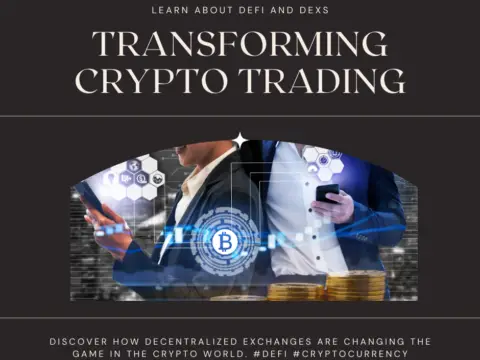Decentralized Finance, or DeFi, is reshaping the landscape of financial services, challenging traditional banking models and introducing innovative alternatives. Here’s a closer look at how DeFi influences traditional banking services:
Elimination of Intermediaries: DeFi operates on blockchain technology, removing the need for intermediaries like banks. Smart contracts automate processes, enabling users to lend, borrow, and transact without relying on a central authority.
Access to Global Markets: Traditional banking services often have limitations in providing access to global financial markets. DeFi platforms, being decentralized and borderless, offer users the opportunity to engage in a wide range of financial activities globally, without geographical restrictions.
Financial Inclusion: DeFi promotes financial inclusion by allowing individuals who are unbanked or underbanked to access a suite of financial services. With just an internet connection, users can participate in DeFi protocols, opening up opportunities for a more inclusive financial system.
Liquidity Provision: DeFi introduces liquidity pools that enable users to contribute assets and earn interest. This decentralized approach to liquidity provision contrasts with traditional banking, where liquidity is primarily managed by centralized institutions.
Programmable Money: Smart contracts in DeFi allow for programmable money, enabling automated execution of financial agreements when predefined conditions are met. This level of automation is not easily achievable within traditional banking frameworks.
Competitive Interest Rates: DeFi platforms often provide users with competitive interest rates on deposits and loans. This contrasts with traditional banks, where interest rates are typically set by the institution and may be influenced by various external factors.
Decentralized Exchanges (DEXs): DeFi has popularized decentralized exchanges, allowing users to trade cryptocurrencies directly without relying on a centralized exchange. This approach challenges the traditional model of centralized exchanges operated by financial institutions.
Transparent and Auditable Transactions: Blockchain’s transparent nature ensures that transactions conducted on DeFi platforms are visible and auditable. This transparency enhances trust and reduces the need for external audits, a process commonly required in traditional banking.
Security Through Blockchain Technology: DeFi relies on blockchain’s security features, such as cryptography and consensus mechanisms, to safeguard transactions. This contrasts with traditional banking, where security is typically managed through centralized systems.
Tokenization of Assets: DeFi facilitates the tokenization of assets, allowing users to represent real-world assets digitally. This opens up new possibilities for fractional ownership and trading, challenging the traditional concept of physical asset ownership.
Evolving Regulatory Landscape: DeFi operates in a decentralized and often global environment, posing challenges for regulatory frameworks traditionally designed for centralized financial institutions. This dynamic requires regulatory bodies to adapt and establish guidelines for the evolving DeFi space.
In conclusion, DeFi’s impact on traditional banking services is multifaceted, introducing decentralized alternatives that promote inclusivity, transparency, and efficiency in financial transactions. As DeFi continues to evolve, its relationship with traditional banking will likely shape the future of the financial industry.




